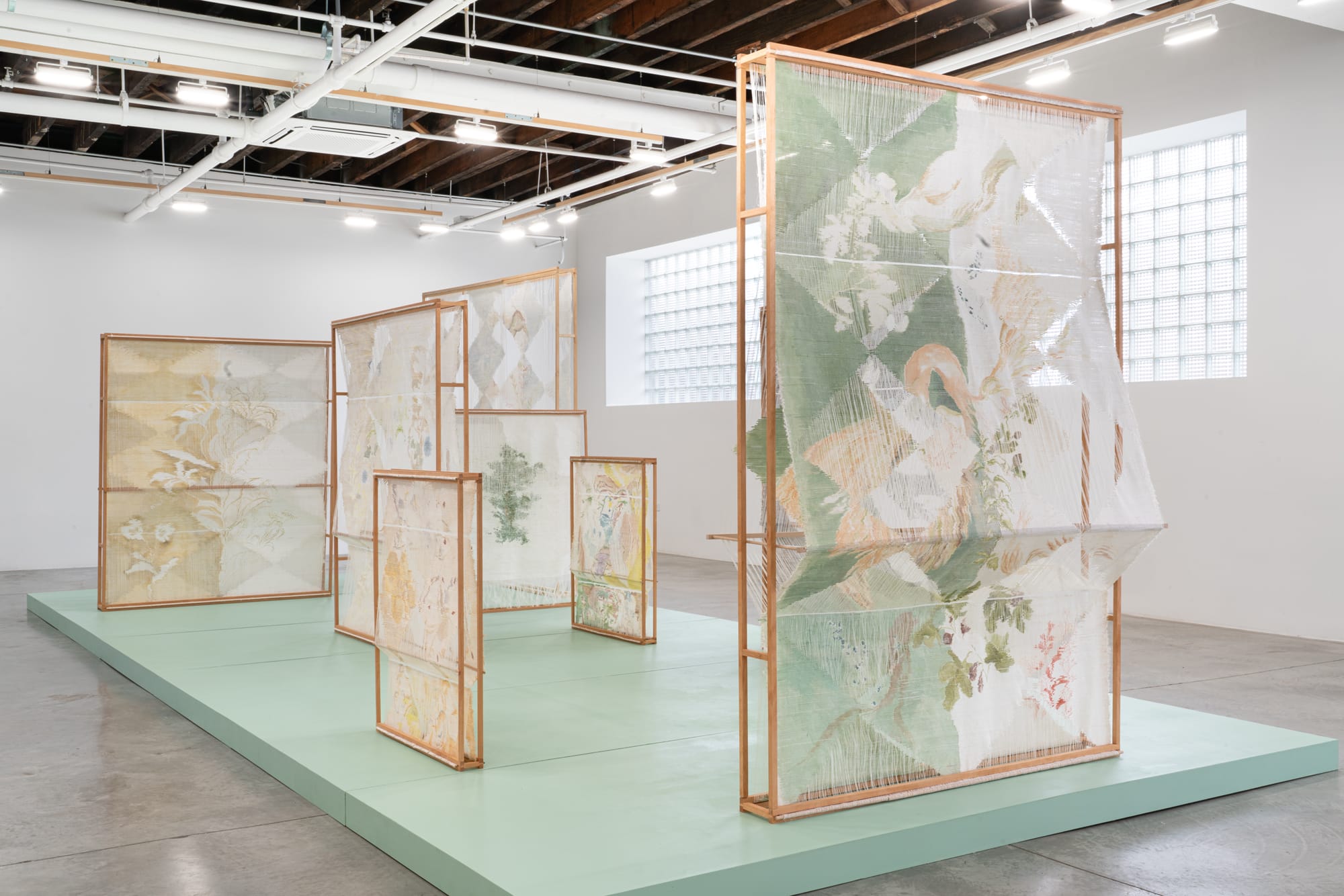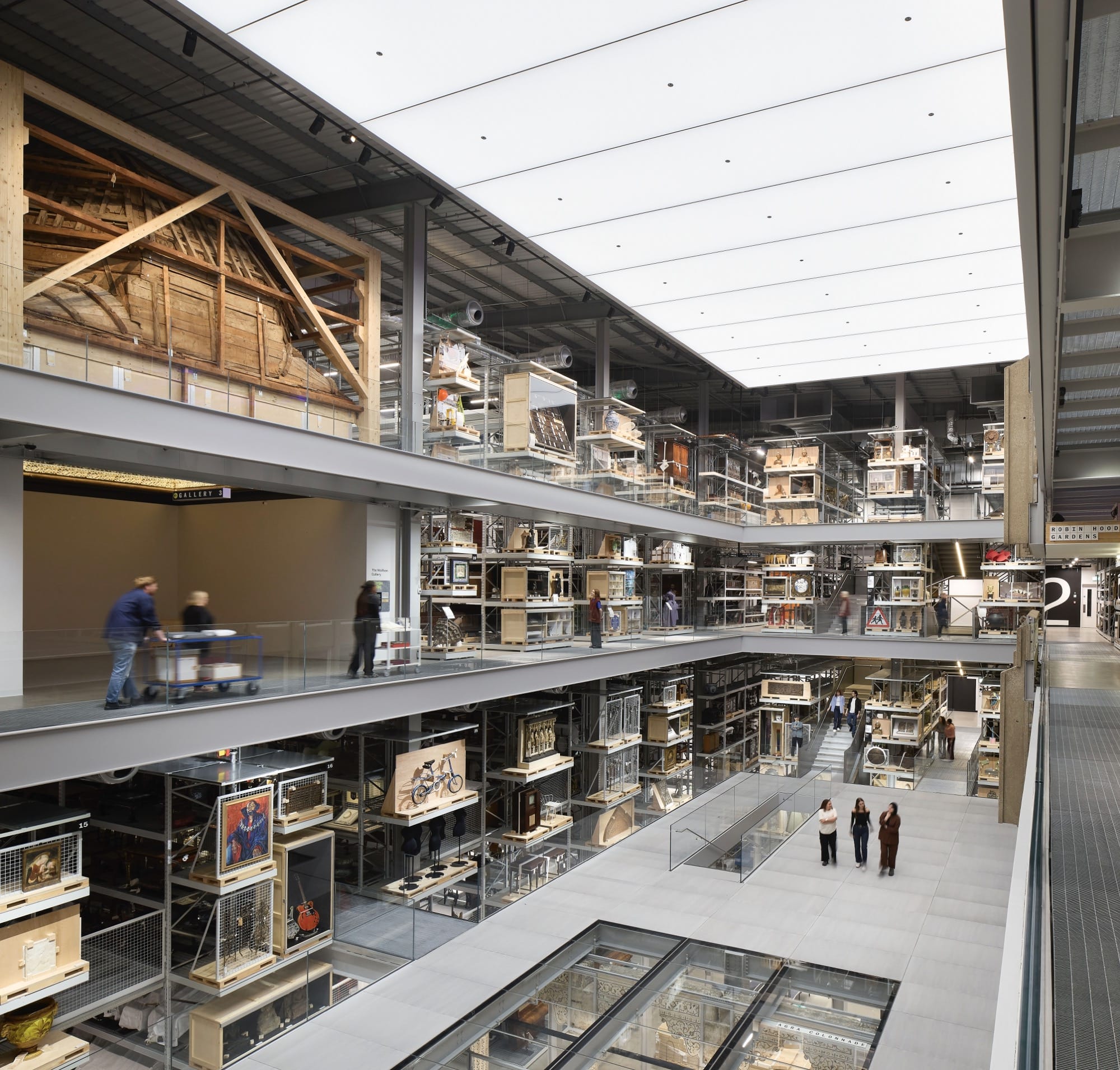Detail of “Forage” (2023), acrylic on antique burl slab, 65.09 x 81.28 x 6.03 centimeters.
Shortly after the Renaissance swept through Italy in the 14th century, the Northern Renaissance began to take hold north of the Alps. In countries like Germany, France, Poland, and England, artists turned their attention toward humanism like their counterparts in Rome and Florence, although piety and the everyday trials of poor people dominated the north, while the wealthy and ruling classes featured more prominently in Italy.
In a new body of work on view at Capsule Shanghai, artist Chris Oh draws on this tradition through a series of paintings that consider how stories, knowledge, and information are shared through generations. Titled Passage, the exhibition features a range of found-object sculptures and wall-based works appropriated from primarily Northern Renaissance-era artists like Pieter Bruegel the Elder, Hieronymus Bosch, and Jan van Eyck, to name a few.
Oh often paints the likeness of the paintings from the period on natural substrates like gnarled slices of burl wood and pearlescent oyster shells, nesting the familiar scenes and portraits within organic surfaces. “I want to use materials that grew over time,” he says.
“Reap” (2023), acrylic on antique burl slab, 48.26 x 62.23 x 4.45 centimeters
The artist begins each piece by referencing the etymology and symbolism within the original works, which he then pairs with an unconventional material. “Reap,” for example, recreates Bruegel’s “The Harvesters” (1565), with grooves of gnarled wood indenting the scene of autumn crops and backbreaking labor. One of the few works within Passage derived from the Italian Renaissance, “Gorgon” positions Leonardo da Vinci’s portrait of Florentine aristocrat Ginevra de’ Benci on a thin piece of dried sea fan, the pocked surface evoking the juniper bush in the background of the masterpiece.
Through these recreations, Oh puzzles together scenes and objects from differing periods to help the viewer draw associations between the two. The idea, Fiona He writes in an essay about the exhibition, is to convey “that all the sentient beings exist(ing) on Earth can relate to notions of the celestial realm and the underworld, finding the lasting beauty that exists in between.”
Passage is on view through January 13. Find more of Oh’s work on Instagram. (via Art Viewer)
“Gorgon” (2023), acrylic on sea fan with wood base, 48.9 x 25.4 x 7.62 centimeters
“Burl” (2021), acrylic on antique wooden burl slab, 53.34 x 76.2 x 5.08 centimeters
“Forage” (2023), acrylic on antique burl slab, 65.09 x 81.28 x 6.03 centimeters
“Herd” (2023), acrylic on antique burl slab, 44.13 x 62.87 x 5.08 centimeters
Top left: “Faint” (2023), acrylic on wood panel with antique frame, 21.27 x 13.65 x 3.18 centimeters. Top right: “Shimmer” (2023), acrylic on seashell, acrylic on seashell, 19.67 x 13.02 x 6.35 centimeters. Bottom left: “Radiate” (2023), acrylic on seashell, 22.9 x 20.32 x 2.54 centimeters. Bottom right: “Shed” (2023), acrylic on wood panel with antique frame, 22.86 x 20 x 2.86 centimeters
Detail of “Burl” (2021), acrylic on antique wooden burl slab, 53.34 x 76.2 x 5.08 centimeters
Installation view of “Hatch” (2023), acrylic on cicada with brass rod, robin’s egg, faux eggs, faux nest, antique metal holder, 34.92 x 20.32 x 20.32 centimeters
Installation view of “Chlorophyll” (2023), acrylic on antique statue, 34.61 x 16.83 x 19.05 centimeters
Do stories and artists like this matter to you? Become a Colossal Member today and support independent arts publishing for as little as $5 per month. The article Reflecting Time Passing, Chris Oh Reinterprets Works of the Northern Renaissance on Ephemeral Substrates appeared first on Colossal.


